 |
Meiler Lab Computational Chemical and Structural Biology |
Login
|
Application of Quantitative Structure Activity Relation Modeling Reveals Pathway Specific Inhibitors for beta-Hematin Crystallization in Plasmodium falciparum
Abstract:
GlaxoSmithKline and Novartis screened nearly 4 million compounds for activity against Plasmodium falciparum, the primary causative agent of human malaria. As a result, approximately twenty thousand potent in vitro antimalarials were identified. The complete data sets of hits were deposited in ChEMBL, an open access database. While many of these potent in vitro antimalarials have the potential to serve as chemical starting points for hit-to-lead development, the biochemical pathway responsible for activity is unknown. Indeed, target-elucidation of biological activity is a challenge in chemistry and biology. Here, we determine if ligand-based virtual screening approaches can effectively streamline antimalarial drug discovery focusing on inhibition of β-hematin (synthetic hemozoin) formation as a target pathway. An in-house diverse small molecule library (144,330 total compounds) with an initial hit rate of 0.37% (530/144,330) was used as a knowledge-base to establish QSAR models using the cheminformatics software suite called BCL::ChemInfo. A theoretical enrichment of 45 fold was determined for an independent data set based on a false positive rate of 0.1%-1%. These models were applied to virtually screen the publically available GSK and Novartis databases of in vitro antimalarial compounds. The GSK in vitro antimalarials were obtained (13,229 compounds) and an experimental enrichment of 44 fold was achieved for the compounds based on a concentration threshold of 70µM. 17 of these compounds were subsequently tested in the heme-speciation assay and 15 were confirmed to perturb the hemozoin formation pathway in P. falciparum.
This research project is a collaborative effort between the laboratories of David Wright (link) and Jens Meiler at Vanderbilt to guide experimental expertise with computational algorithms to find an effective therapeutic against Malaria.
The following protocol capture explains each steps and commandline in the protocol to recreate the aformentioned QSAR model development:
Get all applications part of BCL::ChemInfo here.
Alumni Project Members: Mariusz Butkiewicz